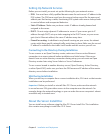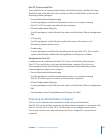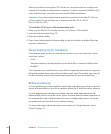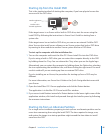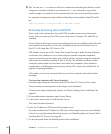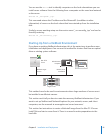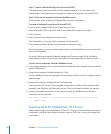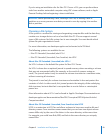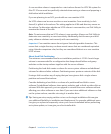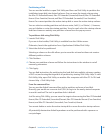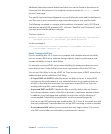
2 Identify the target server.
If you don’t know the IP address and the remote server is on the local subnet, you
can nd servers using the comannd line. For more information about this process,
see “Identifying Remote Servers When Installing Mac OS X Server” on page 90.
3 Use the Terminal to open a secure shell connection to the target server.
The user name is root.
4 For the password, enter the default password for installation.
This is usually the rst eight characters of the server’s built-in hardware serial number.
For more information about this password, see “About Server Serial Numbers for
Default Installation Passwords” on page 90.
About Server Serial Numbers for Default Installation Passwords
Server serial numbers are used for more than inventory tracking. The server’s built-in
hardware serial number is used as the default password for remote installation.
The password is case-sensitive.
To nd a server’s serial number, look for a label on the server. If you’re installing on
an older computer that has no built-in hardware serial number, use 12345678 for the
password.
If you replace a main logic board on an Intel Xserve, the built-in hardware password is
“System S” (no quotes).
Identifying Remote Servers When Installing Mac OS X Server
When using Server Assistant, you must be able to recognize the target server in a list
of servers on your local subnet or you must enter the IP address of the server (in IPv4
format: 000.000.000.000) if it resides on a dierent subnet. Information provided for
servers in the list includes IP address, DNS name, and Media Access Control (MAC)
address (also called hardware or Ethernet address).
If you use VNC viewer software to remotely control installation of
Mac OS X Server v10.6 or later, it might let you select the target server from a
list of available VNC servers. If not, you must enter the IP address of the server
(in IPv4 format: 000.000.000.000).
The target server’s IP address is assigned by a DHCP server on the network. If no DHCP
server exists, the target server uses a 169.xxx.xxx.xxx address unique among servers on
the local subnet. Later, when you set up the server, you can change the IP address.
If you don’t know the IP address and the remote server is on the local subnet, you
can nd servers that are awaiting install nding the the Bonjour service name
“_sa-rspndr._tcp.”
90 Chapter 5 Installation and Deployment



